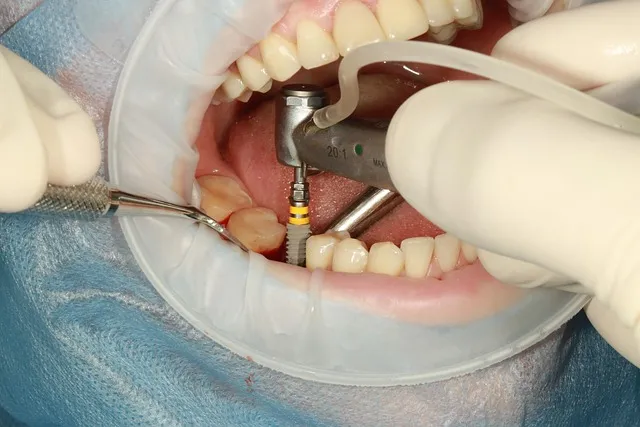Gender Reassignment surgery is also known as sex reassignment surgery. There are different gender re-confirmation surgeries like transgender surgical procedures or a series of surgical procedures that can be used by a trans person to change their physical characteristics and sexual preference. These procedures can help them closely resemble the physical, mental, and emotional or physiologically with their gender dysphoria.People with gender dysphoria or born with ambiguous genitalia can often choose to undergo treatment and a mental health therapy. These are used by the people who need to make these arrangements. Let's look at gender reassignment surgery: procedure, benefits, and risks.Also Read: Top Warning Signs That Someone Needs Mental Health Treatment
What is a gender reassignment surgery?
- Gender Reassignment surgery is a title procedure where you understand what complete gender reassignment surgery involves.
- It can be helpful in the comprehension by medical and mental health benefits of the procedures and hormonal therapy.
- The period of living in deciphering gender roles before surgery is considered living in gender dysphoria.
- The techniques can vary based on the individual's needs, trust, and recommendations from their healthcare team.
- It is crucial to consult with an experienced healthcare professional specializing in gender-affirming care to get personalized information.
What is the procedure of Gender Reassignment Surgery?
The producer for gender reassignment surgery, also known as gender re-confirmation surgery or sex reassignment surgery, varies depending on the individuals and their desired outcomes.- It is essential to note that there are different steps and techniques that are involved in gender reassignment surgery.
- It is necessary to note the specific steps and get involved in asking questions to the doctors.
- There can be differences among surgeons and medical facilities; however, we can provide a general overview of the procedure commonly associated with the male to females and female-to-male gender reassignment surgery.
1. Male-to-female gender reassignment surgery:
- Orchiectomy: This is a surgical process that removes the testicles to reduce the testosterone hormone which can be the first step of MTF gender surgery. This procedure can create a neovaginal use of penile and scrotal skin; the unit can involve reshaping the genital area and removing the penis, they can design the remaining tissues to contrast the vaginal canal, and their surgeon can also create a blogroll hood and potentially clitoral glands.
- Breast augmentation surgery: This surgery involves or is chosen to undergo breast augmentation to achieve a more freeing appearance; this inclines the insertion of breast implants. Breast augmentin can help increase the feminine appearance and this includes inserting breast implants into the chest. Many trans people may choose to undergo breast augmentation to achieve a more feminine appearance
- Facial feminization surgery: Facial feminization makes sure some MTF individuals can opt for FFS and can include a range of surgical procedures to diminish the fat on the facial features. These can consist of a rhinoplasty, brow filler, and contouring or chin reduction. These may include rhinoplasty and can involve the removal of breasts to create a more masculine chest in female-to-male surgeries. They can also have rhinoplasty, nose shaping and brow lift, jaw contouring, and chin reduction.
2. Female-to-Male gender reassignment surgery:
- Breast Removal: Females to males generally involve the removal of the breasts to create a more masculine chest, and the procedure can include a mastectomy or the subcutaneous mastectomy. It can involve repositioning or resistant nipple swaps.
- Metoidioplasty can use the clitoral tissues to create small pallies, while phalloplasty uses the clitoral tissue to create a neophallus. New penile metoidioplasty uses the clitorial tissue to make a neophallus while using the clitoral tissue to create a small pallus. This includes urethral lengthening.
- Hysterectomy and oophorectomy these surgeries involve the removal of the uterus and ovaries, respectively. They are typically referred to reduce the risk of complications and the need for ongoing hormonal management.
3. Benefits of gender reassignment surgery-
- Alleviation of gender dysphoria does affect many transgender individuals. Fender dysphoria is a side stress resulting from misalignment between their gender identity and signed sex at the broth.
- Gender reassignment surgery can help alleviate the dysphoria by aligning their physical appearance with their identity and promoting a sense of well-being.
- It can help increase mental health and quality of life, and gender reassignment can be associated with improved mental health and outcomes and enhanced quality of life for transgender people.
- Enhanced self-esteem and body confidence are the transgender individual and gender reassignment surgery can lead to an improved sense of self-esteem.
- With this newfound body, a conference can have better physical characteristics with a finger identity, produce great self-acceptance, and reduce distress related to body functioning.
- These surgeries can also help reduce the discrimination against transgender individuals undergoing surgery and can help mitigate the risk associated with gender conformity, such as discrimination and harassment or violence.
Complications, risks, and recovery of gender reassignment surgery?
There is a small risk of complications that Individuals having bottom surgery should be aware of these include-- Changes in the sexual scenario or even changes in the sex organs can be a little difficult to deal with, thus it becomes important to talk to the doctors and clear your doubts.
- There can be complications like fever, infections and wounds, changing color, bladder, problems with altered sexual function, and side effects of anesthesia.
- Many people can choose to have these surgeries and experience an improvement in their quality of life.
- Depending on the procedure, there can be a 94 to 100 percent chance of an improvement in the person's quality of life, and depending on the preceding surgery you can be satisfied with the result.
- There are many mental health benefits of these gender reassignment surgeries.
When should you call a doctor for gender reassignment surgery problems?
- After the surgery, there can be some common symptoms, like bleeding from time to time and that does go away after several years.
- Signs of infection such as wounds and the change in color of the scars. Signs of infection include wounds that can change color or are not healed.
- In case the wounds are not clearing up this is your sign to call your doctor.
Summary-
Procedure and gender affirmation can aid in the transition to a person's self-identified gender adaptation and alter that facet of chest and genitalia. This helps in gender affirmation, and they can decide to undergo surgery. You can choose to experience a single or several different operations, and working with a mental health professional is crucial both before and after the surgery. Working with a mental health professional is best for both before and after surgery. According to research, there are many long-term benefits of this surgery.There are several long-term mental health benefits that these surgeries can help the patient, like undergoing gender affirmation and lower rates of psychological distress and suicidal ideation. Another study says it reduces stress by 8% each year after gender-affirming surgery.Book an online appointment with the Best Mental Health Doctors in IndiaFrequently Asked Questions
Is gender reaffirmation surgery helpful?
Yes, gender reaffirmation surgeries are helpful to the people getting the surgery.
What is the risk of gender reaffirmation surgery?
The risk of the bottom transfer surgery includes, but there are not limited to, bleeding and infection.
What happens after a gender reassignment surgery?
The genital parts are removed and changed to the desired parts in a gender reassignment surgery.
Is a female-to-male GRS successful?
The success to male surgery will depend on factors like a person's health and other factors.
How can one change their gender without the surgery?
Hormone therapy can help in changing gender without surgery.

Reviewed by







